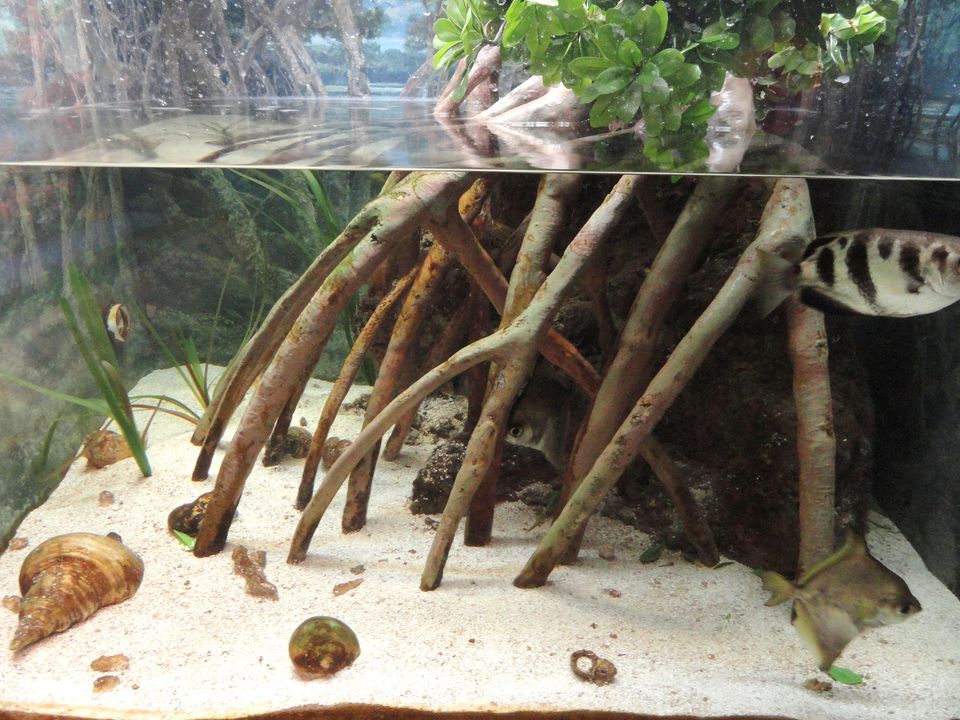World of Arowanas: Species, Care Tips, and Potential Challenges
Arowanas are a group of large, predatory fish that are popular among fishkeepers due to their impressive size, striking appearance, and unique behavior. Let's dive in and get a glimpse of these amazing species.

Arowanas (Osteoglossidae) are a group of large, predatory fish that are popular among fishkeepers due to their impressive size, striking appearance, and unique behavior. There are several species of arowanas, including the Asian arowana (Scleropages formosus), the silver arowana (Osteoglossum bicirrhosum), and the Australian arowana (Scleropages leichardti).
In this article, we'll take a closer look at the different species of arowanas, as well as provide some care tips and information on potential challenges you may encounter when keeping these fish.
Arowana Species
There are several species of arowanas, each with its own unique characteristics. Here's a brief overview of the most commonly kept arowana species:
Asian Arowana

The Asian arowana, also known as the dragon fish or Asian bonytongue, is native to Southeast Asia and is the most popular species among fishkeepers. It is known for its shimmering scales and distinctive long, narrow head. Asian arowanas can grow up to 3 feet (90 cm) in length and are generally peaceful, although they can be territorial with other arowanas.
Silver Arowana

The silver arowana, also known as the jardini arowana or argentine arowana, is native to South America and is known for its silver coloration and long, slender body. Silver arowanas can grow up to 4 feet (120 cm) in length and are generally peaceful, although they can be territorial with other arowanas.
Australian Arowana

The Australian arowana, also known as the barramundi cod or saratoga, is native to northern Australia and is known for its distinctive coloration and long, slender body. Australian arowanas can grow up to 3 feet (90 cm) in length and are generally peaceful, although they can be territorial with other arowanas.
Black Arowana
The black arowana, also known as the black-barred silver arowana or black-finned silver arowana, is native to South America and is known for its silver coloration with black bars and a long, slender body. Black arowanas can grow up to 3 feet (90 cm) in length and are generally peaceful, although they can be territorial with other arowanas.
Each of these species has its own unique characteristics and care requirements, so it's important to research the specific needs of the species you are interested in keeping.
Gold Arowana

Gold arowanas (Osteoglossum aureum) are a stunning species of large, predatory fish native to South America. Their shimmering gold scales and long, slender bodies give them a unique and elegant appearance. Behaviors are similar to other arowanas.
Arowana Care Tips
Arowanas are large, predatory fish that require a spacious tank with plenty of swimming room. A tank size of at least 100 gallons is recommended for most species, although larger tanks may be necessary for larger individuals. Arowanas also prefer a pH between 6.0 and 7.5 and a temperature between 73 and 81 degrees Fahrenheit (23-27 degrees Celsius).
Arowanas are messy eaters and produce a lot of waste, so it's important to use a high-quality filter to keep the water clean. Regular water changes are also important to maintain water quality.
Arowanas are carnivorous and should be fed a varied diet of live or frozen foods, such as feeder fish, worms, and insects. Some arowanas may also accept pellets or flakes. It's important not to overfeed arowanas, as they are prone to obesity and other health problems if they consume too many calories.
Arowanas are generally peaceful and do well in a community tank with other large, peaceful fish. Some compatible species often partnered with this fish are clown knifefish, pacu, oscars, jaguar cichlids, green terrors, gar, tinfoil barb, Siamese tigerfish, and any other somewhat aggressive fish that cannot fit in the arowana's mouth. However, they can be territorial with other arowanas and should not be kept with smaller fish, as they may be viewed as prey.
Potential Challenges of Keeping Arowanas
There are a few potential challenges to keep in mind when keeping arowanas. One of the biggest challenges is their large size and high waste production, which requires a larger tank and more frequent water changes. Arowanas are also prone to obesity if they are overfed, which can lead to health problems.
Another potential challenge is their sensitivity to water quality. Arowanas are prone to stress and illness if the water quality in their tank is not optimal, so it's important to maintain clean, well-filtered water and perform regular water changes.
Arowanas are also known to be territorial, especially with other arowanas, so it's important to provide plenty of space and hiding spots in the tank to prevent aggression.
Despite these challenges, arowanas can make rewarding and interesting pets for experienced fishkeepers who are willing to invest the time and resources necessary to provide proper care.
Arowanas are large, predatory fish that are popular among fishkeepers due to their impressive size, striking appearance, and unique behavior. There are several species of arowanas, including the Asian arowana, the silver arowana, and the Australian arowana. Proper care for arowanas includes a spacious tank, a pH between 6.0 and 7.5 and a temperature between 73 and 81 degrees Fahrenheit (23-27 degrees Celsius), a high-quality filter, and a varied diet of live or frozen foods. Arowanas are generally peaceful and do well in a community tank with other large, peaceful fish, but they can be territorial and sensitive to water quality. With the right care and attention, arowanas can make rewarding and interesting pets.




